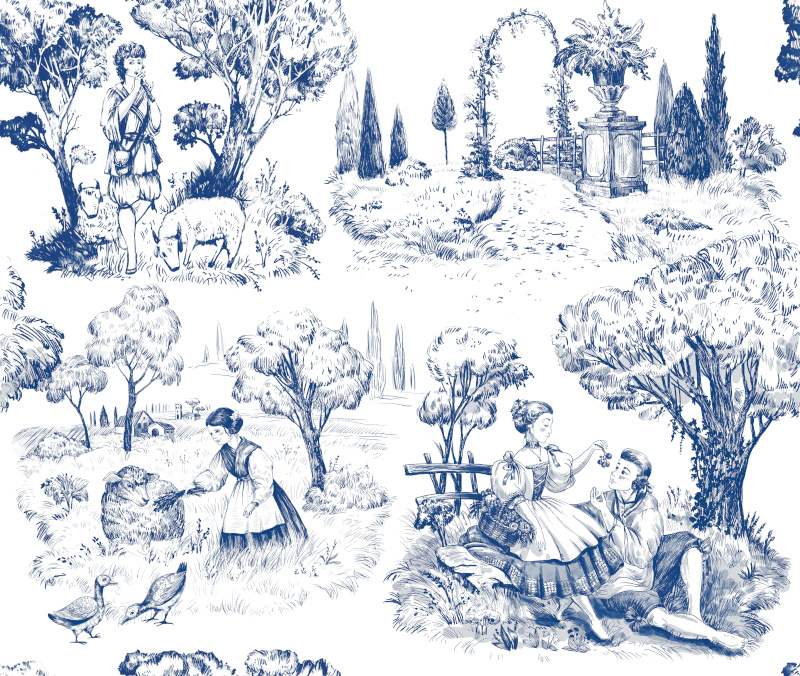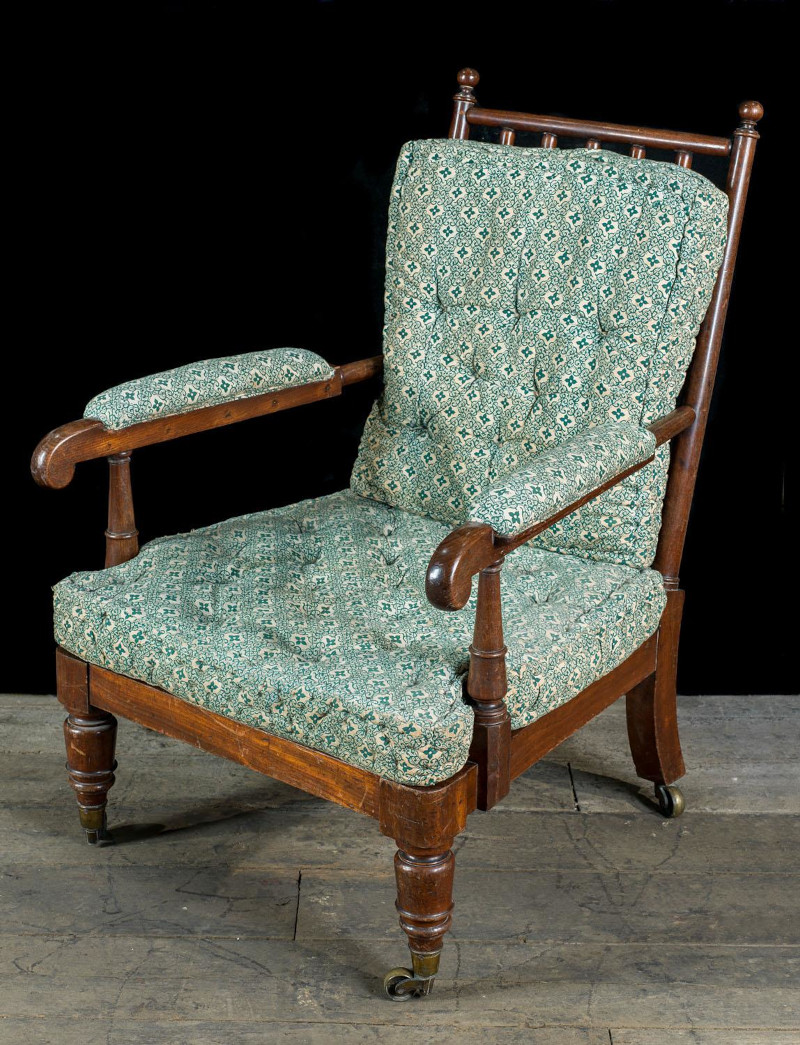If you would like to bring some pastoral scenery, floral patterns, or simply some elegant imagery into your home, then Toile de Jouy could be just what you’re looking for.
There are several famous examples of Toile de Jouy fabric, such as Les travaux de la manufacture by Jean-Baptiste Huet, produced in 1783 at the Oberkampf manufactory in France.
Here is a brief history of Toile de Jouy as well as some advice for what to look out for when you’re ready to make a purchase.

× 
History of Toile de Jouy - what is Toile?
In France, historical events were often recorded on Toile de Jouy patterns, as well as depictions of populist themes
The term ‘Toile de Jouy’ originated in France. It is of course a French word and in English it means ‘cloth from Jouy’, referring to Jouy-en-Josas in the outskirts of Paris.
Between the 16th and 17th centuries, cotton was first imported to France. It became so popular, it was deemed a threat to the French wool and silk industries - therefore it was banned in 1686.
In the 1760s, with the ban on importing cotton coming to an end, textile industrialist Christophe-Philippe Oberkampf set up what would become the first Toile de Jouy business.
Toile de Jouy is traditionally characterised by floral or pastoral designs
Inspired by romantic Rococo art and working with several designers including Huet, the Oberkampf manufactory had produced thousands of Toile de Jouy designs by the time Christophe-Philippe died in 1815.
In France, historical events were often recorded on Toile de Jouy patterns, as well as depictions of populist themes.
As the popularity of Toile de Jouy grew, production began overseas too. In America, patterns featured cultural scenes such as portrayals of Colonial expansion and the American Revolution.
Apart from depicting events, Toile de Jouy is traditionally characterised by floral or pastoral designs, although modern designs can feature more experimental imagery.
Decorating with Toile de Jouy fabric
The Toile de Jouy style often starts with a white background, then the pattern is created using a single colour
The Toile de Jouy style often starts with a white background, then the pattern is created using a single colour - initially black, blue or dark red, but any colour could feature.
Used in the right way, Toile fabric can blend in seamlessly with the furnishings and decoration of both classic and contemporary homes.
Antique Toile de Jouy from the 18th century often has much finer drawings than more modern designs
Whether incorporating some antique Toile de Jouy furniture, or upcycling an old piece with Toile de Jouy fabric, the possibilities are endless.

× 
However you may find that adding Toile de Jouy to your home is best in moderation, since the rich repeated pattern depicting scenes could overload the senses in large quantities!
When cleaning Toile de Jouy fabric, just be careful not to let the colour fade - for example by hand washing it in cold water. It would also be safer to have antique Toile de Jouy dry cleaned.
Advice when buying antique Toile de Jouy
Antique Toile de Jouy from the 18th century often has much finer drawings than more modern designs.
Red patterns should have a strong colour, while pink is likely a sign of ageing fabric.
The cloth could be rougher for antique Toile de Jouy, with no markings signifying the manufacturer.
Quilts or bed hangings for example would fetch a high price depending on rarity, size and condition - while a small piece of Toile de Jouy fabric for example would be of relatively lower value.
Aside from Toile de Jouy fabric appearing on cushions, upholstery, curtains and bedding, today the style can also be found on fine china - or Toile wallpaper!
As always, when looking to buy antiques, it’s important to carry out some research in advance - and remember that if an item has been too heavily restored, it is no longer an antique!
If you’re interested in French antiques or would like to search through other pieces in our collection, please take a look at our collection and don’t hesitate to contact us.